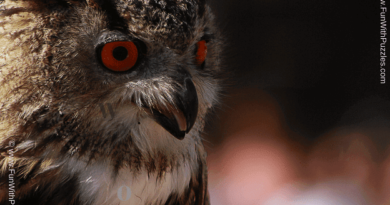The concentration of Malice – The Red Oak Tree
Introduction
Red oak trees are some of the most iconic trees in North America. They grow tall, have deeply furrowed leaf surfaces and reddish-brown bark. But something may be lurking beneath the surface of this seemingly innocent tree: a history of malice. In this blog post, we will explore the concentration of malice and how it affects red oak trees. We will also provide tips on how you can protect yourself from this insidious tree.
The History of the Red Oak Tree
The red oak tree is one of the most iconic trees in North America. Native to the eastern United States, the red oak was an important part of early American history. The tree was used to build homes, furniture, and other items. The red oak was also an important part of Native American culture and religion.
Today, the red oak is considered a valuable resource for sustainable forestry. The tree is resistant to fungus and can grow in a variety of soils and climates. The red oak is also a source of lumber, which can be used for furniture, flooring, and other products.
The Characteristics of the Red Oak Tree
The red oak tree is one of the most popular trees in the United States because of its impressive size and longevity. The red oak is known for its deep-red leaves and extensive root system. The tree can grow up to 300 feet tall and 12 feet in diameter.
The red oak tree is a sturdy and imposing trees that can grow up to 160 feet tall. The tree’s bark is rough and scaly, with deep furrows running along its trunk. The branches are stout and twisted, making the tree difficult to climb. The leaves are broad, leathery, and green with a reddish hue. The flowers are small and white, and the fruit is a rounded acorn. The red oak tree is native to North America, where it can be found in moist locations such as riverbanks or swamps. It prefers moderate temperatures and soils that are well-drained.
The red oak is a hardy tree that can survive in a variety of climates, including cold winters. The tree is also resistant to disease, making it a great choice for landscaping purposes. The red oak is known for its strong wood which makes it perfect for furniture and other construction projects.
The red oak is considered a sacred tree by many Native American tribes . The wood from the tree is used to create ceremonial items such as drums and shields. The red oak is also used as an ingredient in traditional medicines.
The Natural Enemies of the Red Oak Tree
The natural enemies of the red oak tree include the Oak Moth, the Red Oak Bark Beetle, and the Northern Pine Sawyer. The Oak Moth feeds on the leaves of the red oak tree, while the Red Oak Bark Beetle and the Northern Pine Sawyer feed on the bark. These pests cause damage to the tree’s tissues and can eventually lead to its death.
The red oak tree is a sturdy hardwood tree that can live for hundreds of years. However, it is also susceptible to a number of harmful diseases and pests. The most common enemies of the red oak tree are insects, fungi, and viruses.
Insects: The most common insect pests of the red oak are the European spruce budworm, the chestnut borer, and the eastern tent caterpillar. These insects feed on the leaves and buds of the tree, causing them to fall off or turn yellow and die. They also produce silvery white webs that can clog up water systems and damage other plants.
Fungi: Fungi can cause many different types of damage to plants. They can attack roots, stems, leaves, flowers, or fruit. Some fungal diseases affect trees directly while others infect other plants nearby that then spread the fungus to the red oak tree.
Viruses: Viruses are tiny pieces of genetic material that can attack cells in plants. They can cause leaves to curl back or drop off the tree, flowers to droop and die, or entire branches to die off .
How to Protect Your Home from the Effects of a Malicious Red Oak Tree
Red oak trees are common in the United States and can grow to be quite large. However, they can also be quite dangerous if not treated properly. The following tips will help you protect your home from the effects of a malicious red oak tree.
There are many ways to protect your home from the effects of a malicious red oak tree. One way is to remove any branches that extend into your home or property. You can also install structural guards around pipes, wires and other important access points. You can also seal openings in your roof and walls to prevent sap from entering your home. Finally, you can keep an eye on the health of the tree and take action if there are any signs of damage or infection.
1. Keep your distance from the tree. If you are within a few feet of a red oak tree, it is important that you keep your distance. These trees can grow very quickly and could cause serious damage if they fall on top of your home or other structures.
2. Install fencing around your property. If you live in an area where red oaks are common, it is important to install fencing around your property to keep them away from your home. This fencing should be at least 6 feet high and made of metal or sturdy material to stop the tree from reaching your house.
3. Get expert help if needed. If you find that a malicious red oak tree is causing structural damage to your home or posing a safety hazard, it is important to get expert help immediately. A professional arborist may be able to remove the tree safely without causing further damage, while an insurance company may offer coverage for damages caused by the tree.
The red oak tree is one of the most common trees in the United States.
Red oak trees are susceptible to a variety of diseases and pests, which can damage your home and surroundings if they spread. Here are some tips on how to protect your home from the effects of a malicious red oak tree:
1. Keep an eye on your trees. If you notice any signs of disease or pest damage, take action right away.
2. Remove infected plants and branches promptly.
3. Clean up debris regularly. Leaves, needles, sap, and other debris can accumulate over time and cause damage to your roofing, siding, windows, and plumbing systems. Keep your property clean by removing debris regularly using a leaf blower or vacuum cleaner.
4. Contact a professional if necessary. If you need help protecting your home from the effects of a malicious red oak tree, don’t hesitate to contact a professional landscaper or pest control company. They will be able to provide you with comprehensive protection plans for your property – including recommendations for specific preventative measures you can take on your own behalf!




